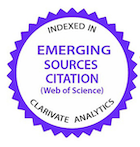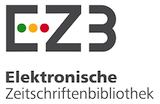Evaluation of dog tooth enamel by scanning electron microscopy after different types of polishing
DOI:
https://doi.org/10.1590/1809-6891v24e-74619EAbstract
Polishing is an important procedure which takes part in the periodontal disease treatment, being commonly performed with the help of prophylactic paste and provides smoothing of the tooth surface, hindering the adhesion of new plaque. With this study we aimed to evaluate by means of scanning electron microscopy (SEM), the effects of dental polishing observing, qualitatively, the effectiveness and the damage, in three distinct treatments after calculus removal. Twenty (20) teeth were used (four of each dog), from which were obtained three samples each. The sixty samples were distributed into three groups (G0= tooth segmentation submitted to prophylaxis without polishing; G1= vestibular surface prophylaxis followed by polishing with the use of Defengy OC® and G2= vestibular surface prophylaxis followed by polishing with the use of pumice and fluorine gel). The samples were prepared and sent to images execution via SEM. These images, with enlargement of 100x and 500x, were evaluated and the classification averages were obtained. The statistical analysis of these averages was made through the Friedman nonparametric test using the software R. Statistical differences were observed (P<0,05) between groups 0 and 1 in the 100x magnification, whereas in the 500x magnification there was no difference (P>0,05) between the groups. The evaluation based on SEM images at two magnifications was essential, as it allowed the visualization of grooves and remaining calculi in a comprehensive way at 100x magnification and in more detail at 500x.
Keywords: tooth calculus; periodontal disease; veterinary dentistry; dental plaque; dental surface
Downloads
References
Wallis C, Holcombe LJ. A review of the frequency and impact of periodontal disease in dogs. J Small Anim Pract. 2020; 61(9):529-540. https://doi.org/10.1111/jsap.13218.
Wiggs RB, Lobprise HB. Periodontology. In: Stepaniuk K. Veterinary dentistry: principles and practice. 2nd ed. Philadelphia: Lippincott Raven; 1997. p.83-85. English.
Niemiec BA. Periodontal disease. Topics in Companion Animal Medicine. 2008; 23(2):72-80. https://doi.org/10.1053/j.tcam.2008.02.003.
Mitchell, PQ. Odontologia de Pequenos Animais. 1st ed. São Paulo: Roca; 2004, 192p. Portuguese.
Gioso MA. Odontologia Veterinária para o Clínico de Pequenos Animais. In: Gioso MA. Doença periodontal. 2nd ed. São Paulo: Manole; 2007. p. 26.
Hardham J, Dreier K, Sfintescu C, Evans RT. Pigmented-anaerobic bacteria associated with canine periodontitis. Vet. Microbiol. 2005; 106(1-2):119-128. https://doi.org/10.1016/j.vetmic.2004.12.018.
Fichtel T, Crha M, Langerová E, Biberauer G, Vla ín M. Observations on the effects of scaling and polishing methods on enamel. J. Vet. Dent. 2008; 25(4):231-5. https://doi.org/10.1177/089875640802500402.
Bellows J, Berg ML, Dennis S, Harvey R, Lobprise HB, Snyder CJ, Stone AE, Van de Wetering AG. 2019 AAHA dental care guidelines for dogs and cats. J Am Anim Hosp Assoc. 2019; 55(2):49-69. https://doi.org/10.5326/jaaha-ms-6933.
Toriggia, PG, Hernández SZ, Negro, V.B. Tratamiento de la enfermedad periodontal em el perro: comparación de la efectividad del cavitador, el curetaje y el pulido dental. RevCsMorfol. 2015; 17(1):16-22. https://revistas.unlp.edu.ar/Morfol/article/view/2251.
Pameijer, CH, Stallard, RE, Hiep, N. Surface characteristics of teeth following periodontal instrumentation: a scanning electron microscope study. J. Periodontol. 1972; 43(10):628–633.https://doi.org/10.1902/jop.1972.43.10.628.
Cobb, CM, Harrel, SK, Zhao, D, Spencer, P. Effect of EDTA Gel on Residual Subgingival Calculus and Biofilm: An In Vitro Pilot Study. Dent J (Basel). 2023;11(1):22-35. https://doi:10.3390/dj11010022.
Martini AC, et al. Eficácia e segurança do uso de Defengy OC® na promoção da saúde oral de cães com doença periodontal. Medvep. 2016; 12(45):1-7. https://medvep.com.br/eficacia-e-seguranca-do-uso-de-defengy-oc-na-promocao-da-saude-oral-de-caes-com-doenca-periodontal/
Published
How to Cite
Issue
Section
License
Copyright (c) 2023 Brazilian Animal Science/ Ciência Animal Brasileira

This work is licensed under a Creative Commons Attribution 4.0 International License.
Authors who publish with this journal agree to the following terms:
- Authors retain copyright and grant the journal right of first publication with the work simultaneously licensed under a Creative Commons Attribution License that allows others to share the work with an acknowledgement of the work's authorship and initial publication in this journal.
- Authors are able to enter into separate, additional contractual arrangements for the non-exclusive distribution of the journal's published version of the work (e.g., post it to an institutional repository or publish it in a book), with an acknowledgement of its initial publication in this journal.
- Authors are permitted and encouraged to post their work online (e.g. in institutional repositories or on their website) prior to and during the submission process, as it can lead to productive exchanges, as well as earlier and greater citation of published work (See The Effect of Open Access).































